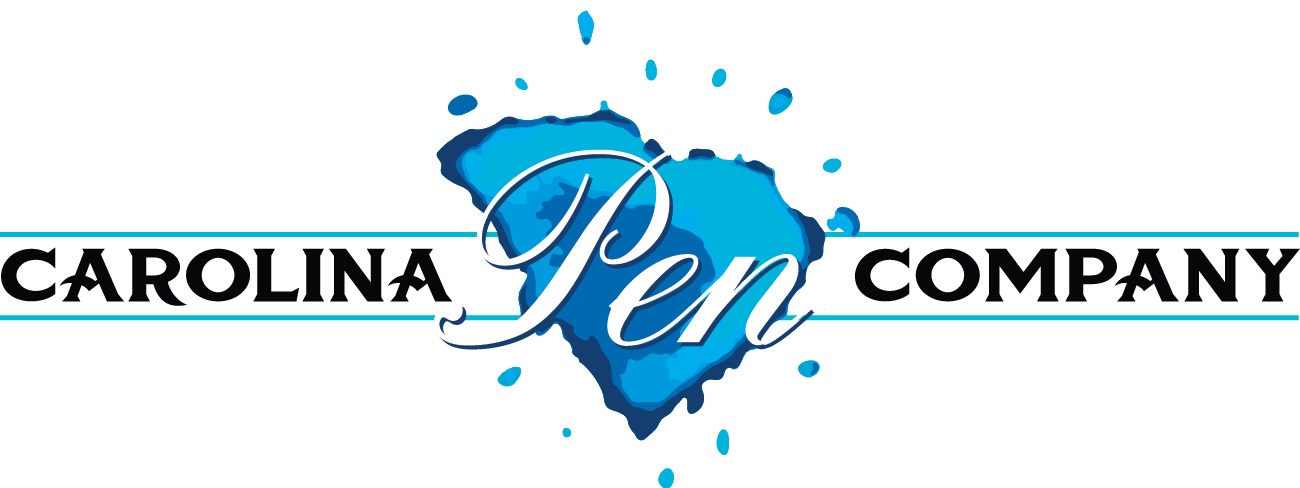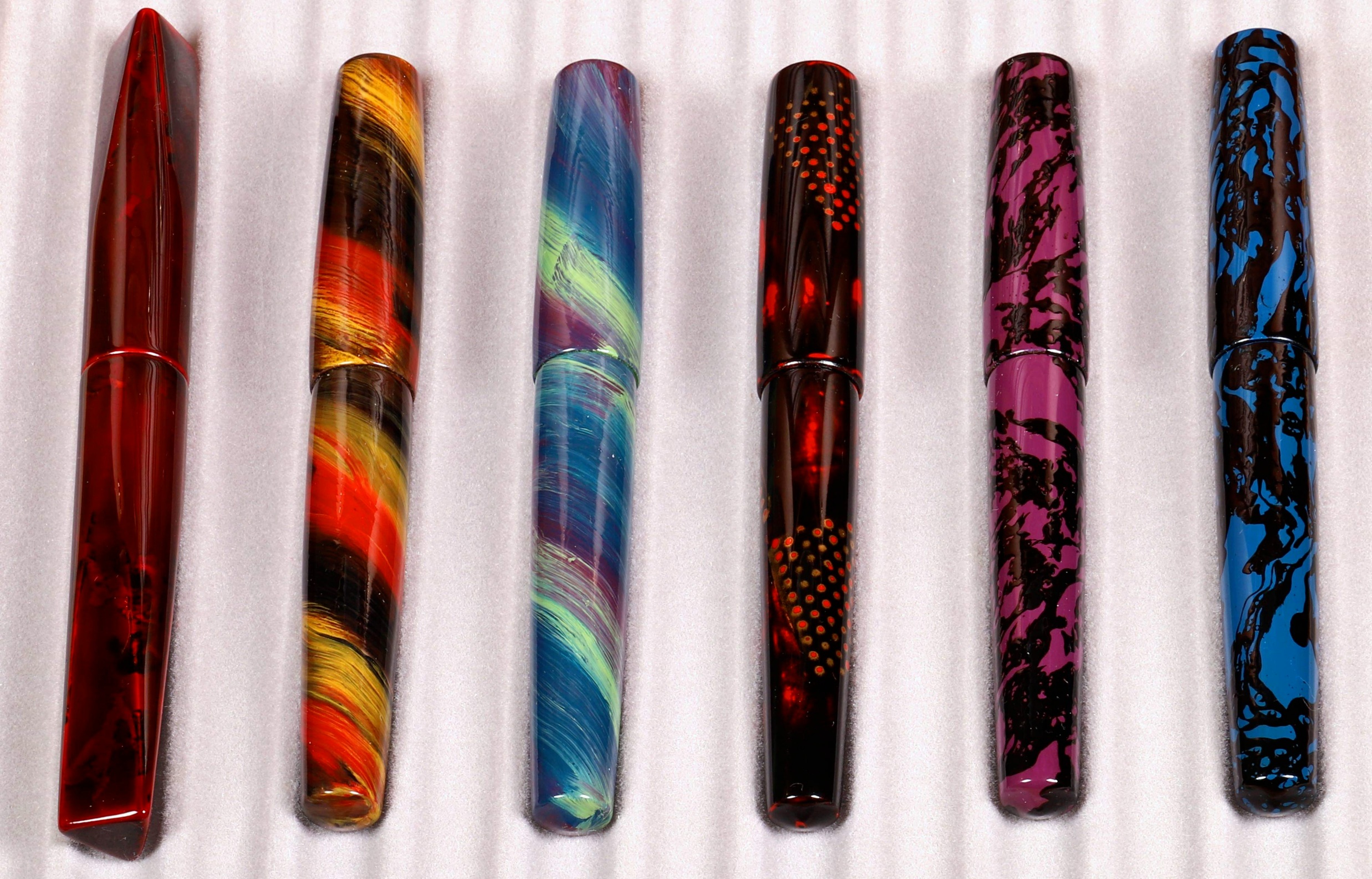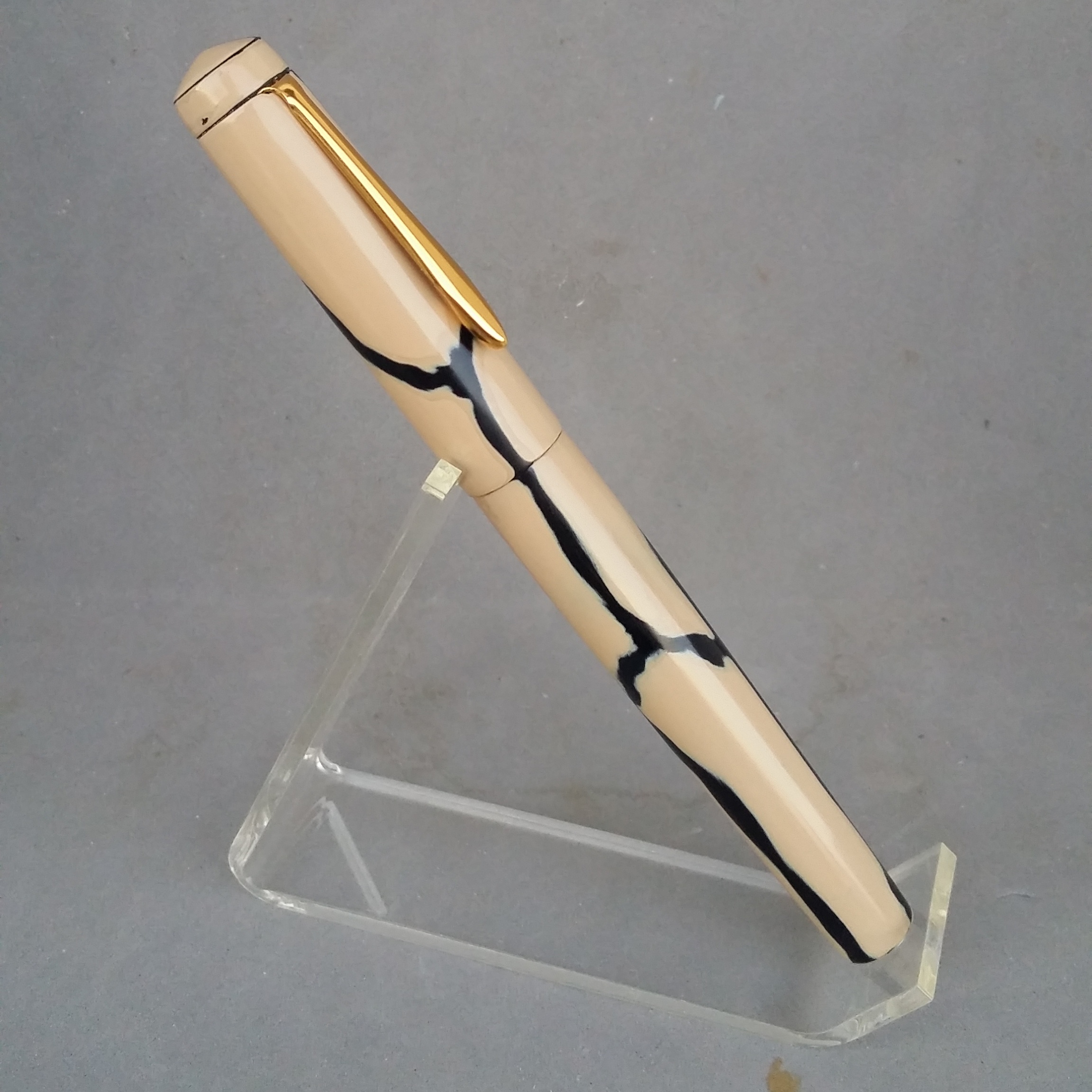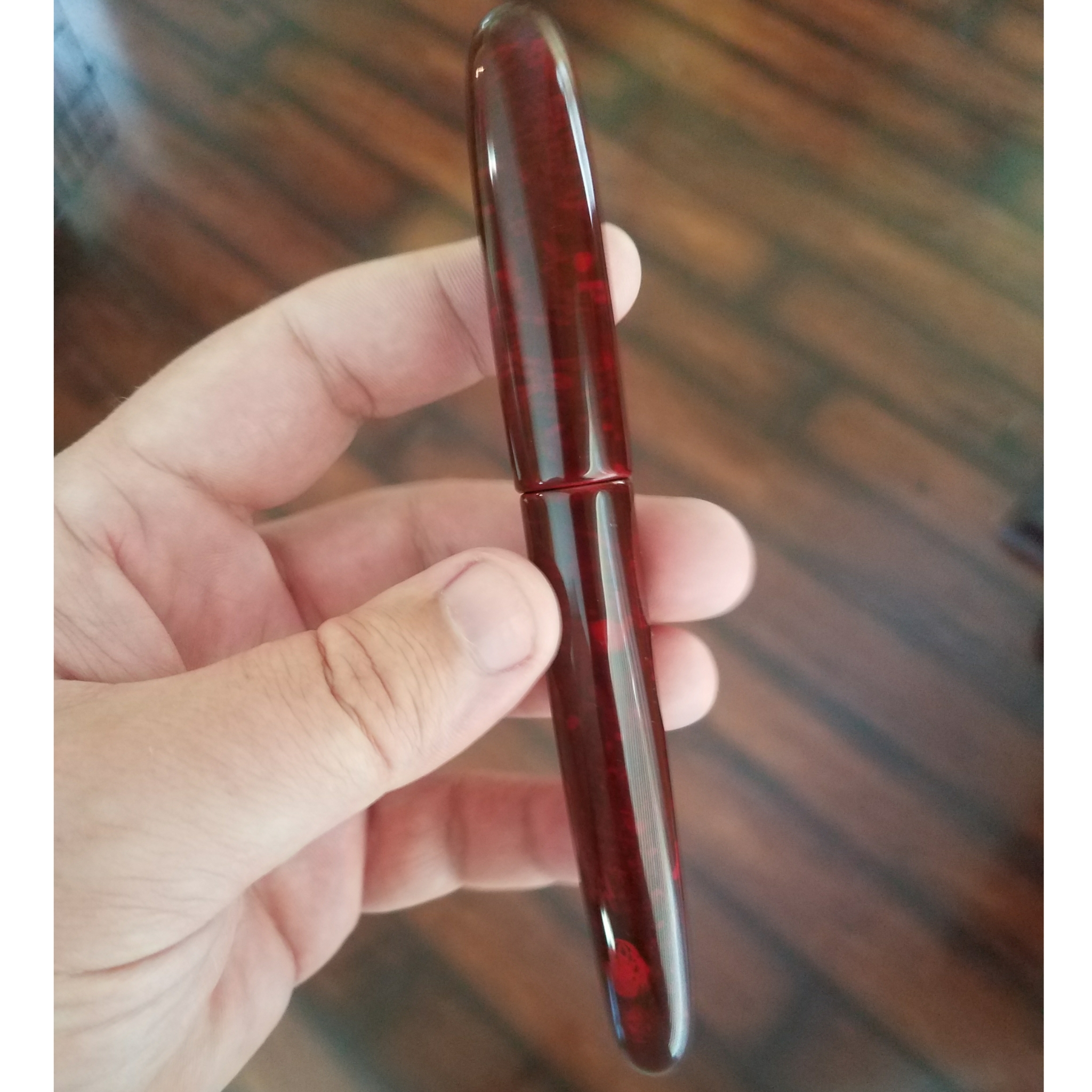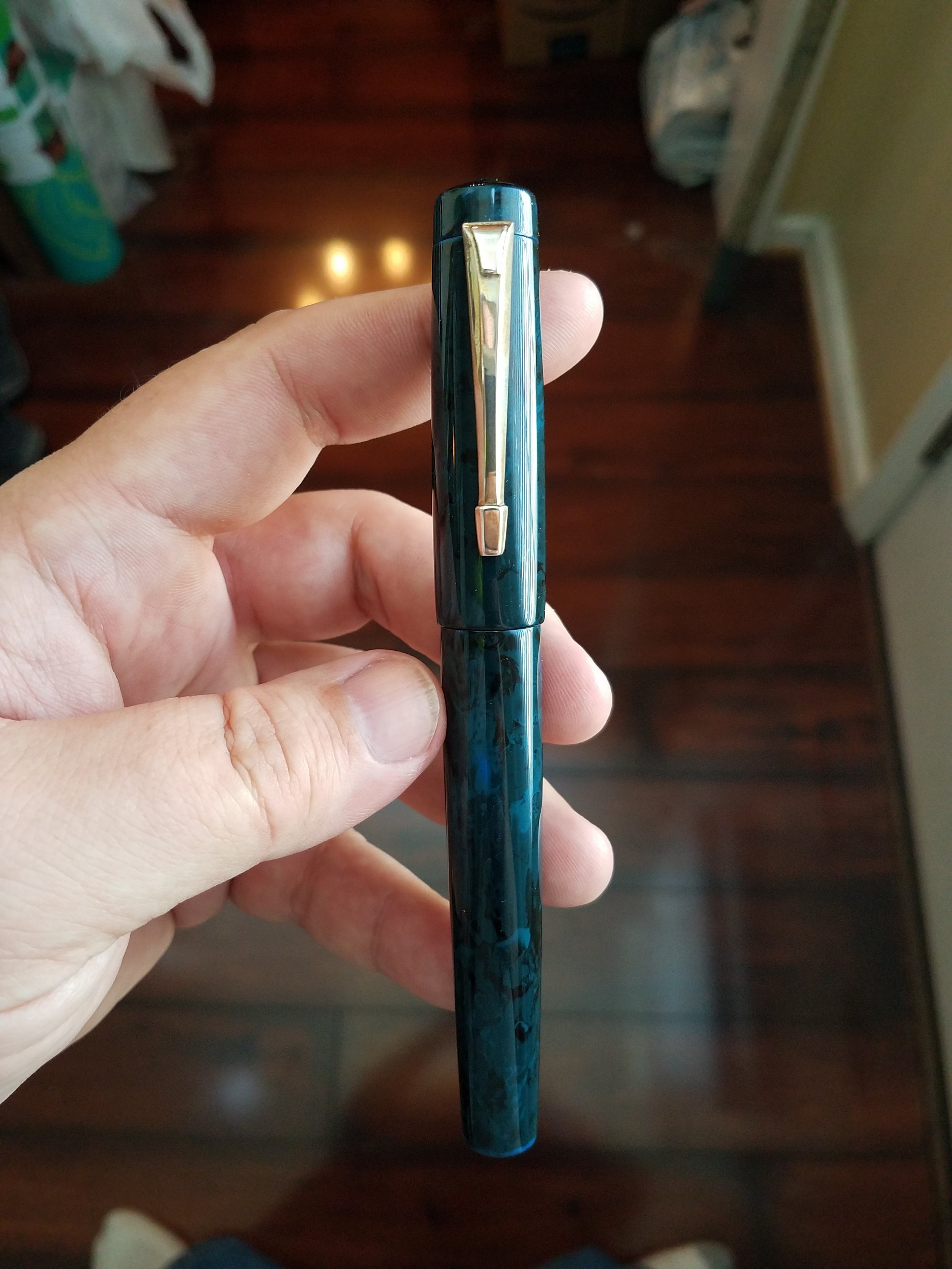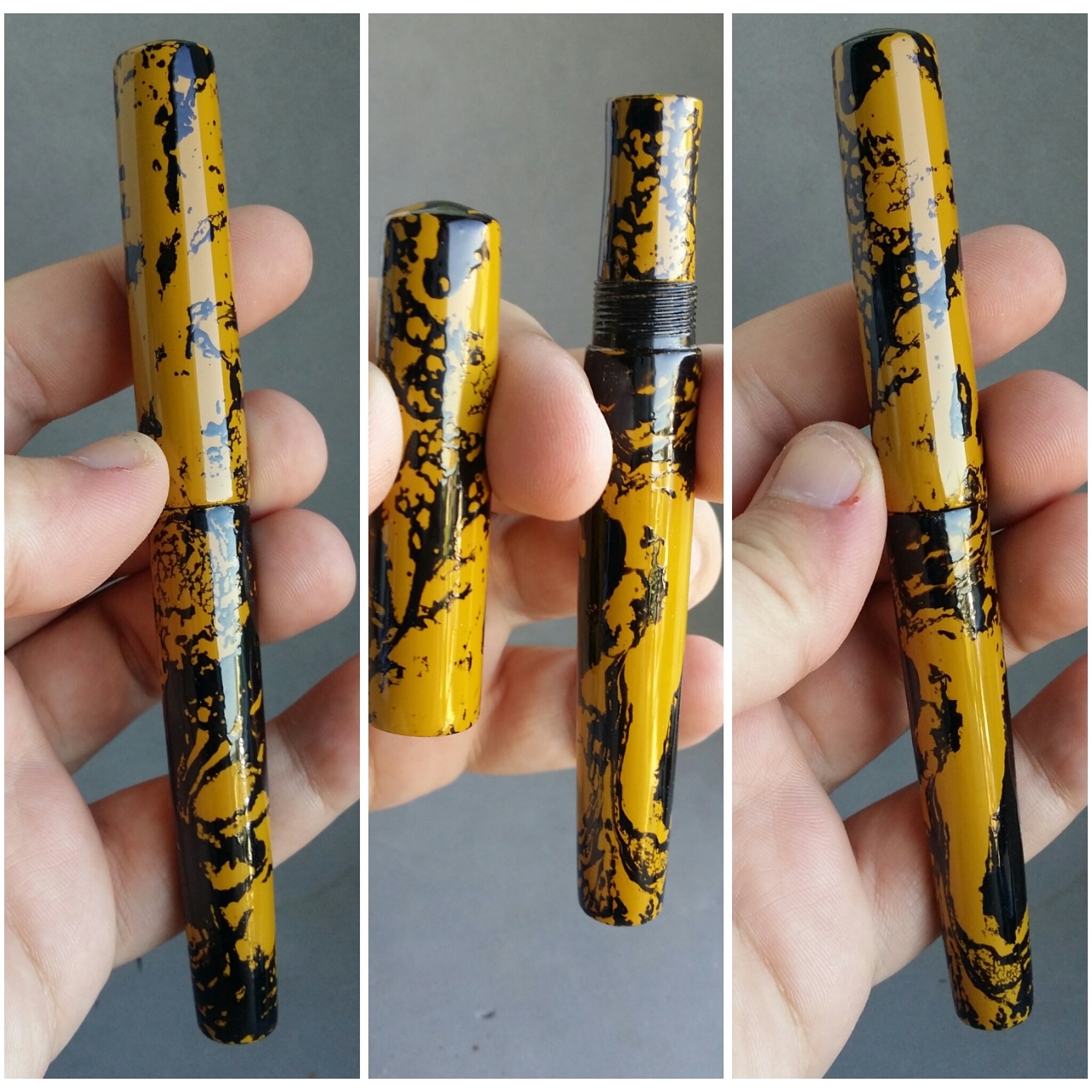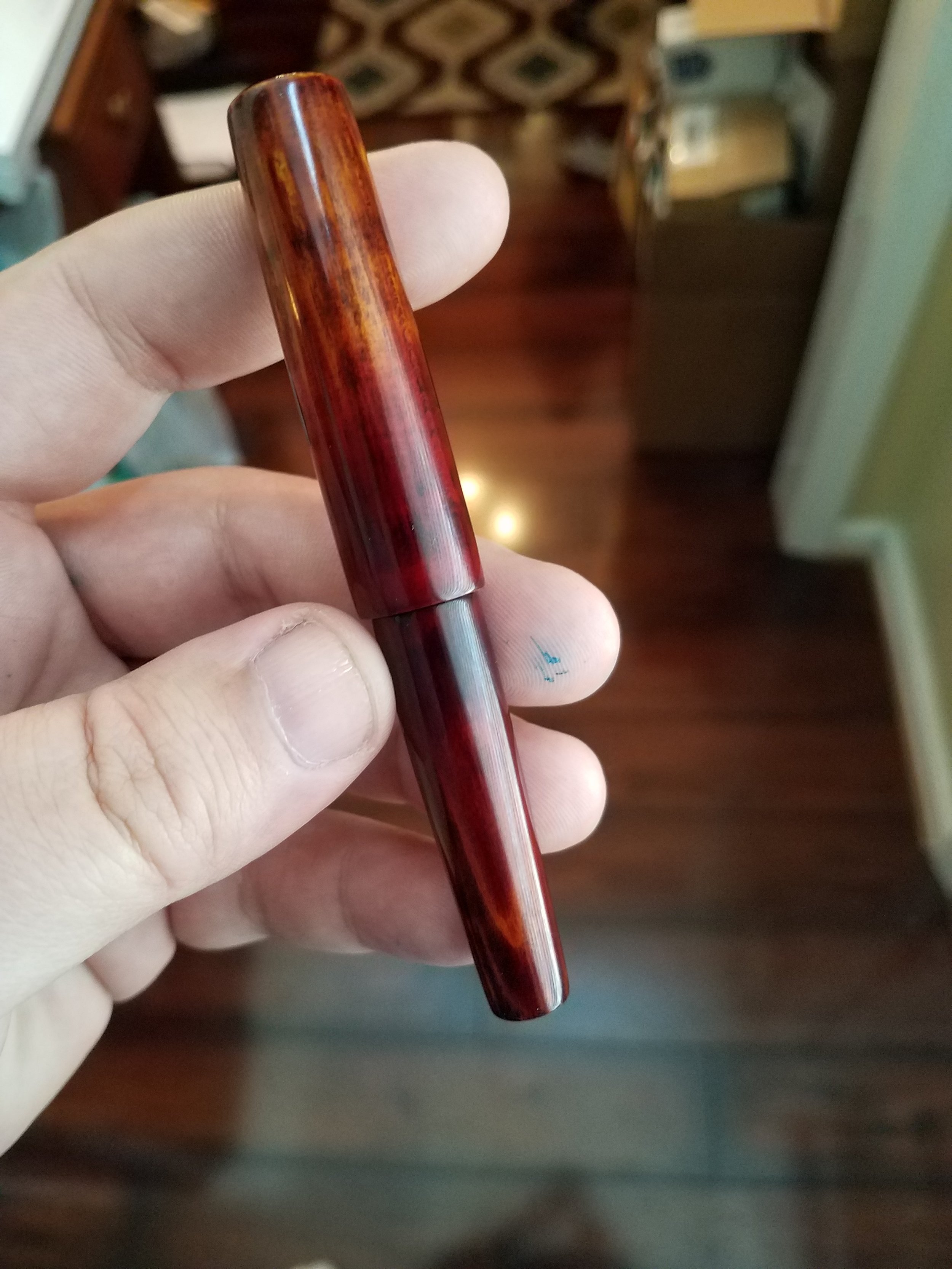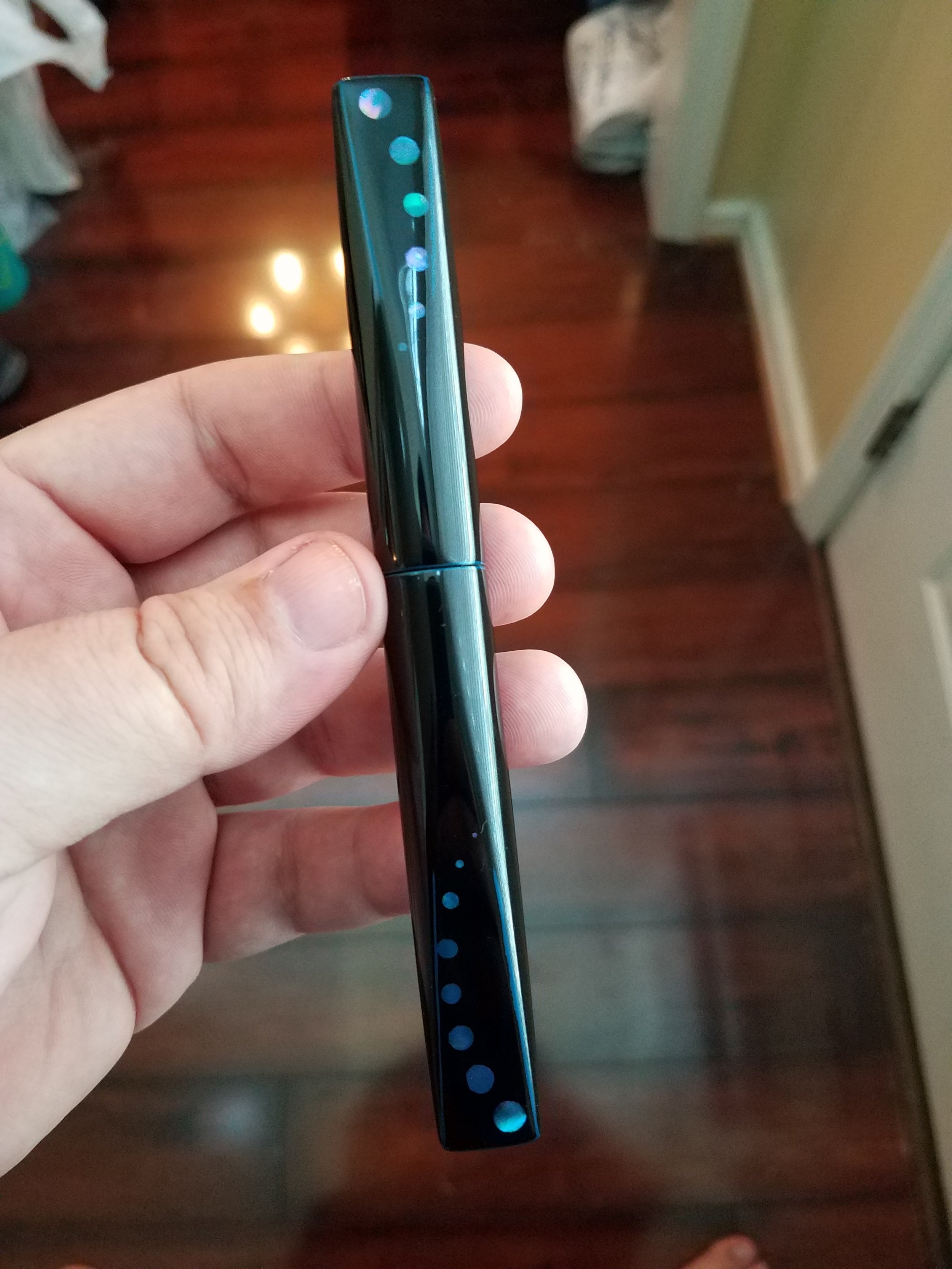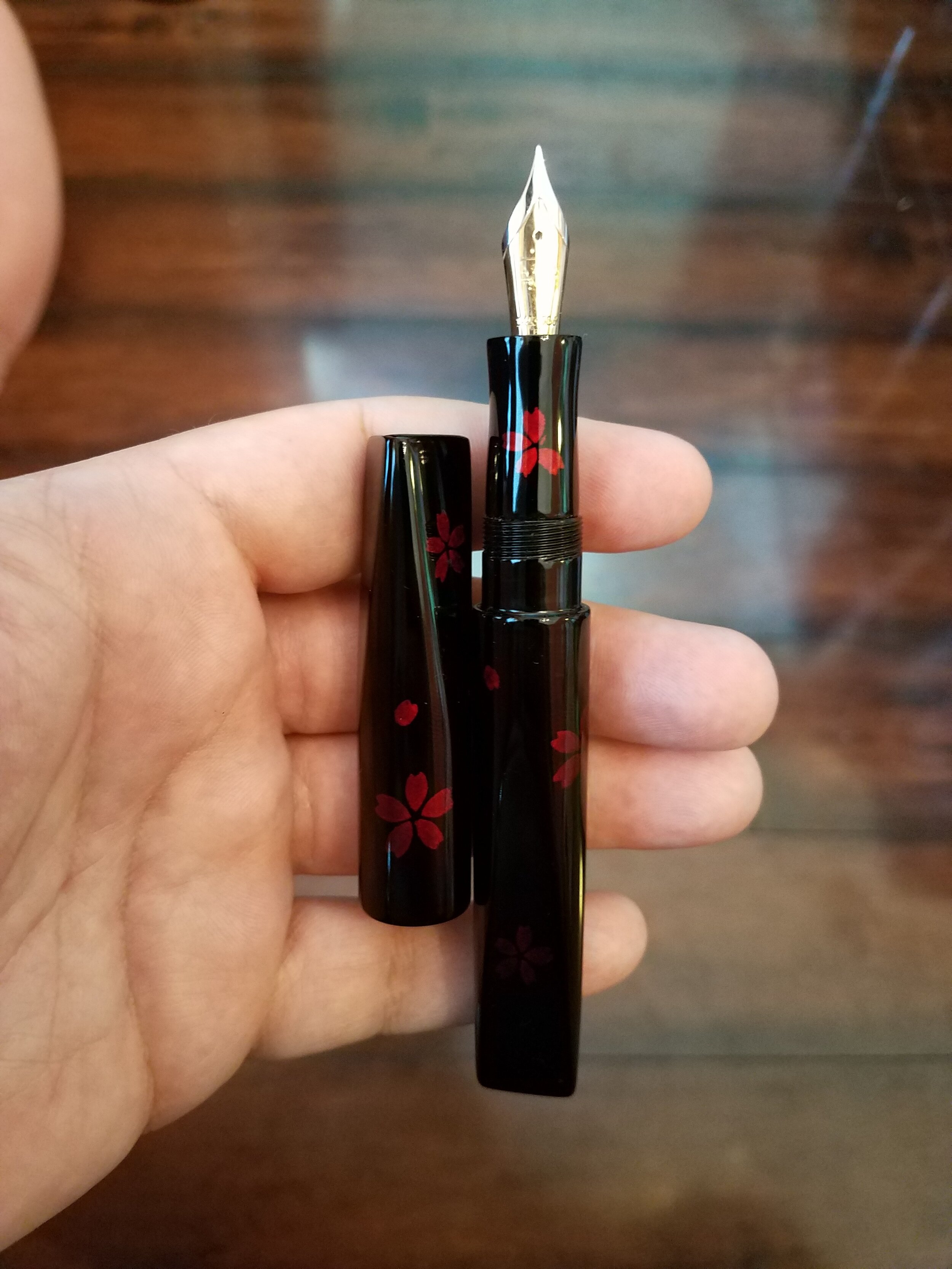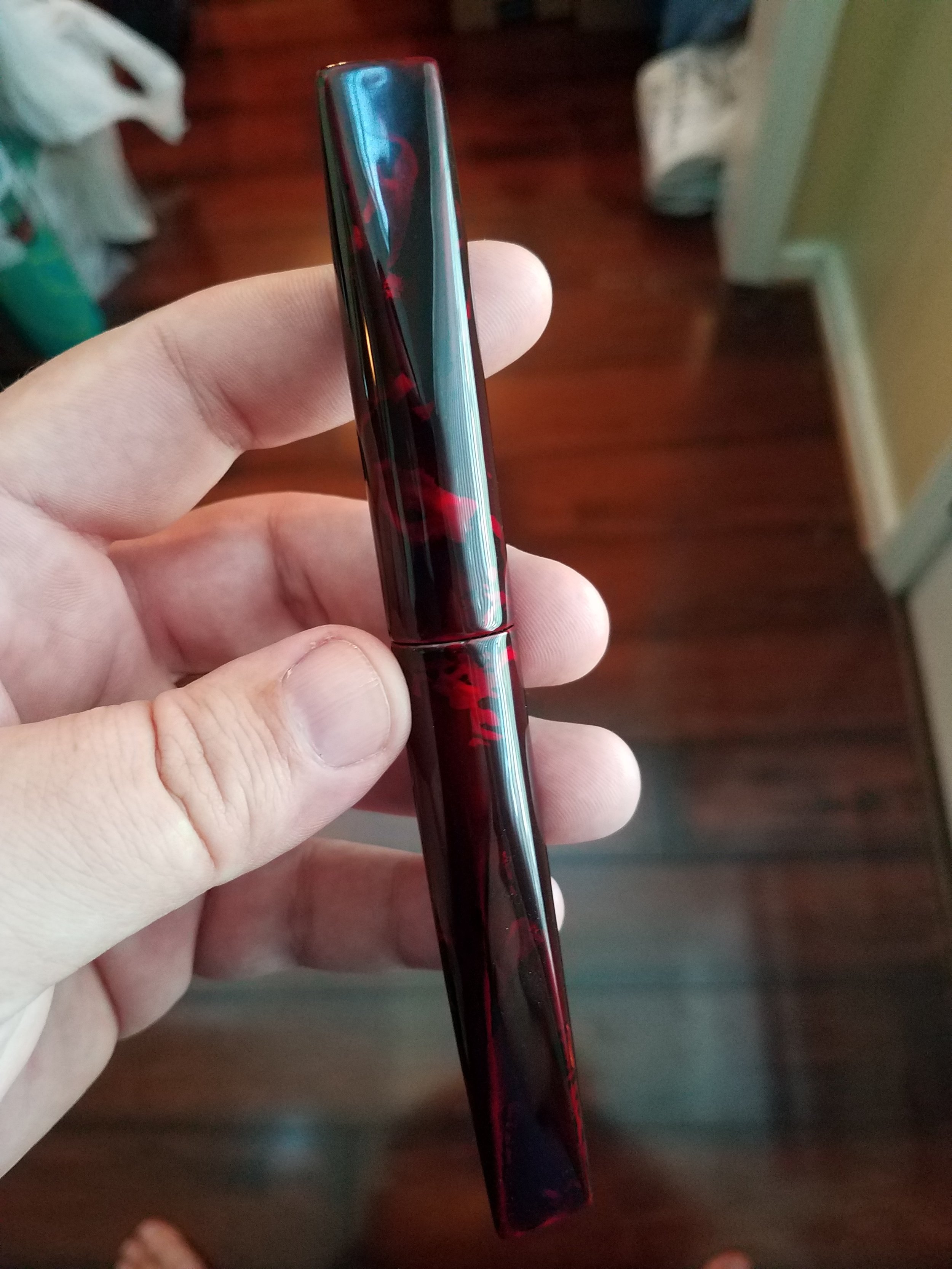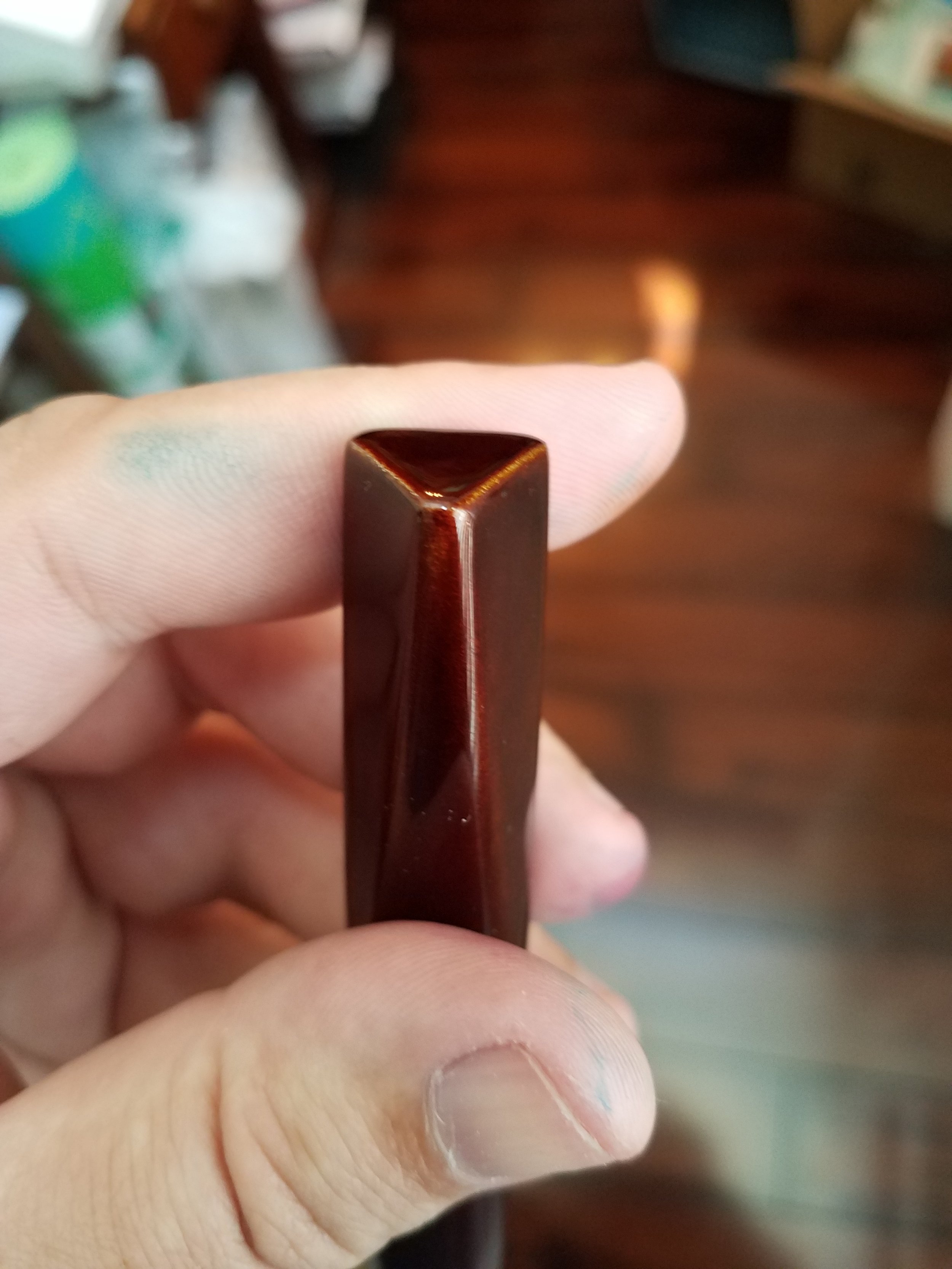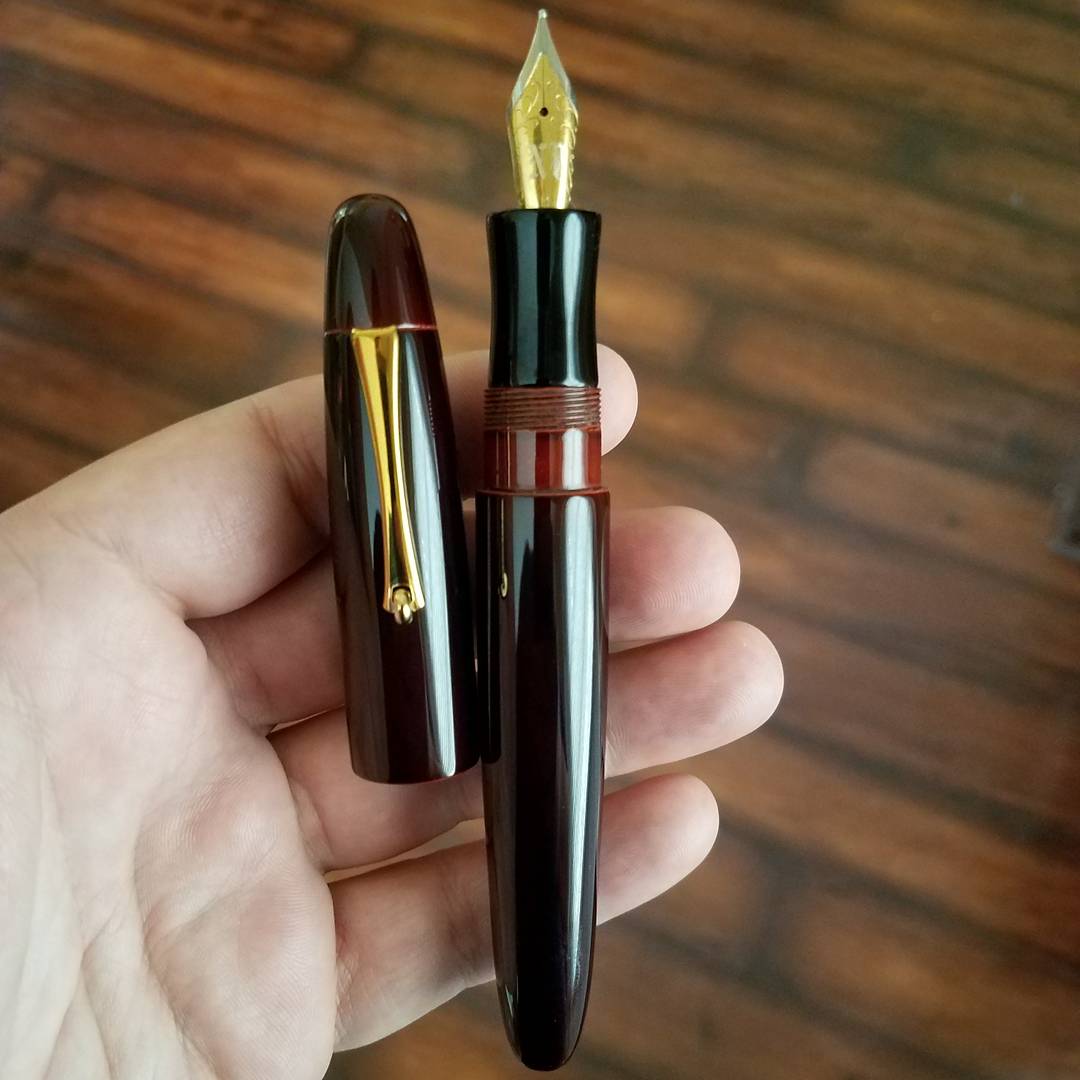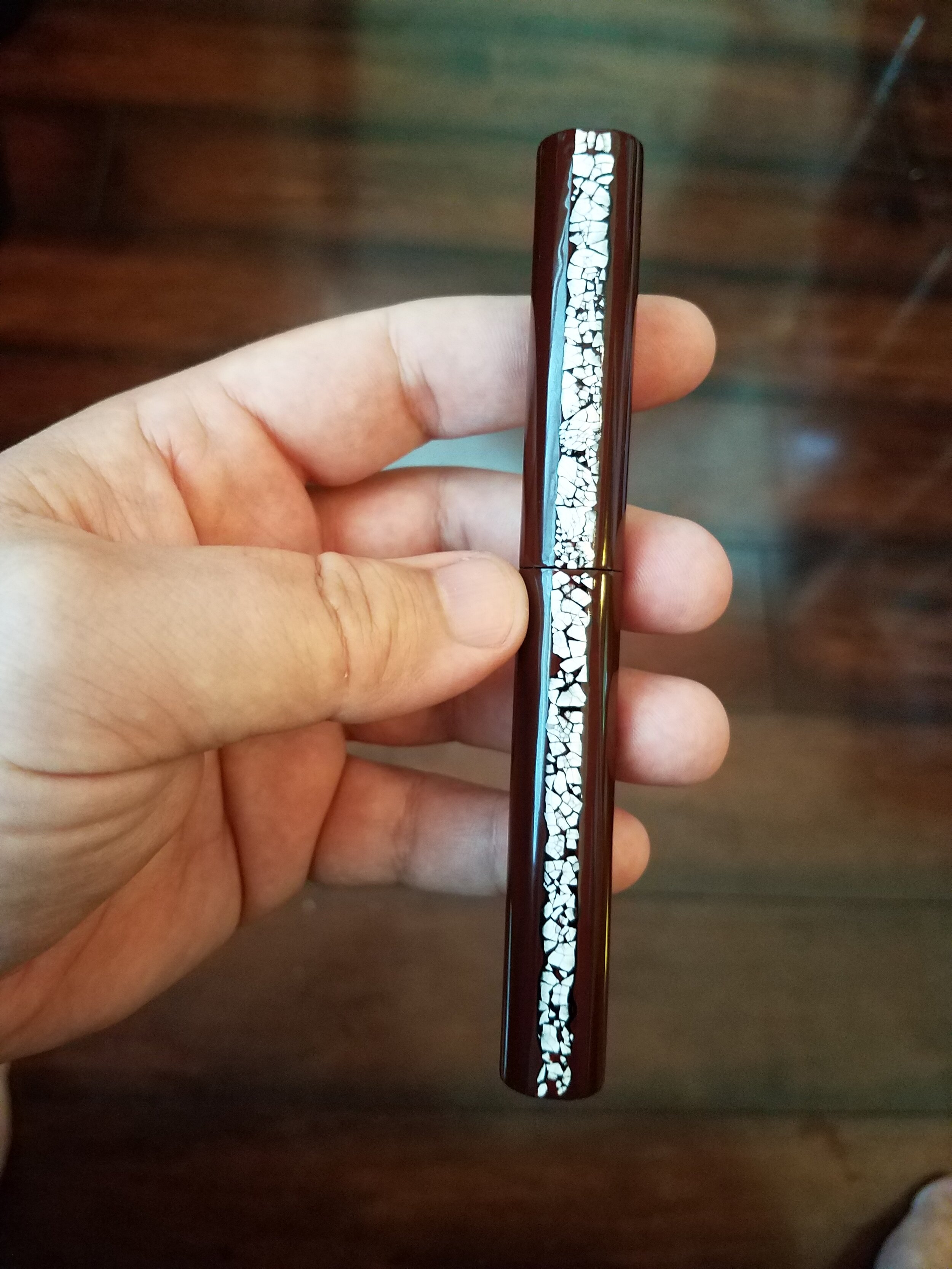Urushi
Photo courtesy of Dr. Joseph M. Vitolo
What is Urushi?
Urushi lacquer is made from the sap of the urushi tree (Rhus vernicifera). It is harvested and refined into the lacquer used to enhance the beauty of many objects. In my case, fountain pens. Urushi is very unique because it does not act like the paints we are so used to. Where traditional paints dry by evaporation of a solvent, urushi cures by absorbing moisture from the air. The substance that causes this is urushiol. When exposed to warmth and humidity, an enzyme is activated and extracts oxygen from the water and supplies it to the urushiol. The urushiol cures and solidifies, forming a hard film. Urushiol is the same substance found in poison ivy, poison oak, poison sumac, and even mango rind. To anyone allergic it causes contact dermatitis, an itchy rash. This is why raw urushi has to be handled with extreme care and cured properly. Once it has cured the surface has hardened and the urushiol can no longer affect the skin. However, anyone with extreme allergies towards urushiol should take extra care when handling any urushi item.
How is it cured?
Urushi is cured in a special cabinet that maintains a very specific & consistent heat and humidity. Each layer of urushi that is applied must be cured in this cabinet for a minimum of 24hrs to fully harden. Only then can that layer be sanded and another layer be applied. Urushi requires patience and determination to yield a beautiful piece of lacquerware.
How do I care for my urushi pen?
Caring for your urushi pen is very easy. Urushi has only one natural enemy and that is UV light. Long exposure to UV light will break down the lacquer over time. Making it become dull and brittle. Every urushi pen I make will come with a handmade pen sleeve for proper storage when not in use. With care your pen will last for many generations!
Styles and Pricing Guide
This is a general breakdown for custom pens with an urushi finish. This does not determine final price as each design will vary. Many of these styles can be combined to create a unique design just for you. A firm price will be given once we've discussed your design in detail. All urushi pens will come with your choice of 14k #6 Two Tone Jowo nib.
Single/Dual Colors - $550
This style consists of one or two solid colors covering the entire pen.
Available colors:
Red
Yellow
Blue
Black
Forest Green
Ivory (Tan)
Orange
Purple
Tamenuri - $550
Tamenuri is a style where you have a solid opaque base color with a transparent color on top. Creating depth. Traditionally the edges of the pen are sanded more to expose the base color.
Available translucent top layer colors:
Brown
Light Amber Brown "Clear"
Red
Orange (more of a reddish orange)
Green
Black
Ishime - $550
Stone texture. The "texture" colors will be the raised portion of the finish. The "filler" color can be any of the available solid or tamenuri colors.
Available "texture" colors:
Black
Red
Yellow
Blue
Purple
Green
Brown
Clear Body Tamenuri - $650
This is a transparent acrylic pen with a tamenuri finish over the top. Very thin coats have to be applied with careful sanding to achieve this finish.
Marbled Tamenuri - $650
This is done by creating a random pattern of both opaque and translucent colored urushi. Built up in many layers to create a marbled effect. Sanded smooth and polished to a high gloss.
Brush Strokes - $650
This style is done by brushing on multiple colors in single brush strokes. Layered together to create a random pattern. This style will have a very slight texture as it is not sanded perfectly smooth.
Organic Overlay - $650 (colored urushi) ; $700 (Abalone) ; $750 (Silver) ; $850 (Gold)
This features a solid colored base layer with a organic patterned overlay of another color. This overlay can be be further embellished by dusting with precious metal powders or inlaying with abalone shell. Being an overlay this aspect of the finish is raised on the surface.
Wood - $650
Available types of finish:
Fuki Urushi - Impregnates and seals the wood grain but is not considered a "top coat". The wood grain feel will remain.
Tamenuri - This will leave a glossy top coat on top of the wood and may darken the coloration. "Clear" urushi is the standard, but colored urushi can also be applied.
Raden - $650+
Raden is a style and technique using inlays of various types of Abalone and Mother of Pearl shells.
Price will be determined on the design and how intricate the application will be. For instance. Randomly placed pieces of abalone sprinkled all over the pen with a top coat would fall under the initial price. Creating an image in abalone using a single piece or mosaic would require more labor...thus a higher price point. Please inquire with your design for a firm price quote.
Seirei - Nuri - $750 (Silver) ; $850 (Gold)
Seirei - Nuri translates to Dragonfly wing pattern. The end result of this technique looks like a "net" of lacquer has been draped over the pen. Can be done over a single solid color, or tamenuri style finish. Very similar to the Organic Overlay except this version is not raised on the surface.
Seirei - Tamenuri - $700 (Copper/Bronze) ; $800 (Silver) ; $900 (Gold)
Same process as the Seirei (Dragonfly Wing pattern) technique but taken a step further by applying a tamenuri finish over everything.
Kara-Nuri - $850 (Colored Urushi) ; $1200 (Silver/Gold)
Kara-nuri is one of the more popular versions of Tsugaru-Nuri. A random raised pattern is applied to the pen body and can be embellished with precious metal powders or contrasting colored lacquer. A final tamenuri top coat is applied with careful sanding to reveal the underlying patterns.
Maki-e - $ Please Inquire
Maki-e translates to mean "sprinkled picture". Designs can vary from one extreme to another so pricing will be on an individual basis.
Urushi only Collaborations - $350+
Have a pen (custom or manufactured) that you'd like to have a urushi finish on? I'd be happy to discuss the possibility! Not all pens will be compatible, but a few questions and a couple of pics will help me determine if I can work with it or not. It's easiest to work with custom pens prior to them being made so I can work with the artisan to make minor changes to allow for the buildup of the lacquer.
